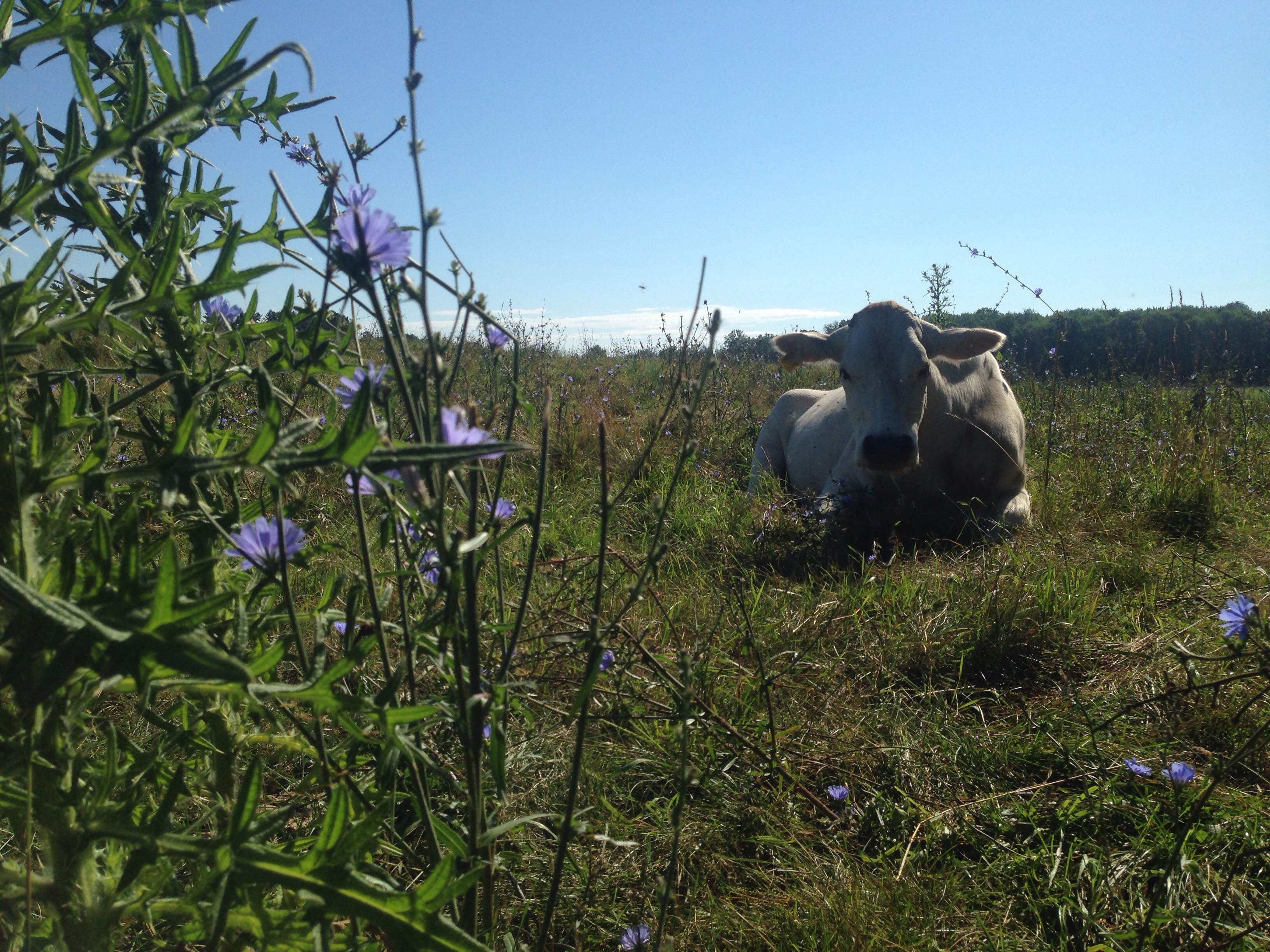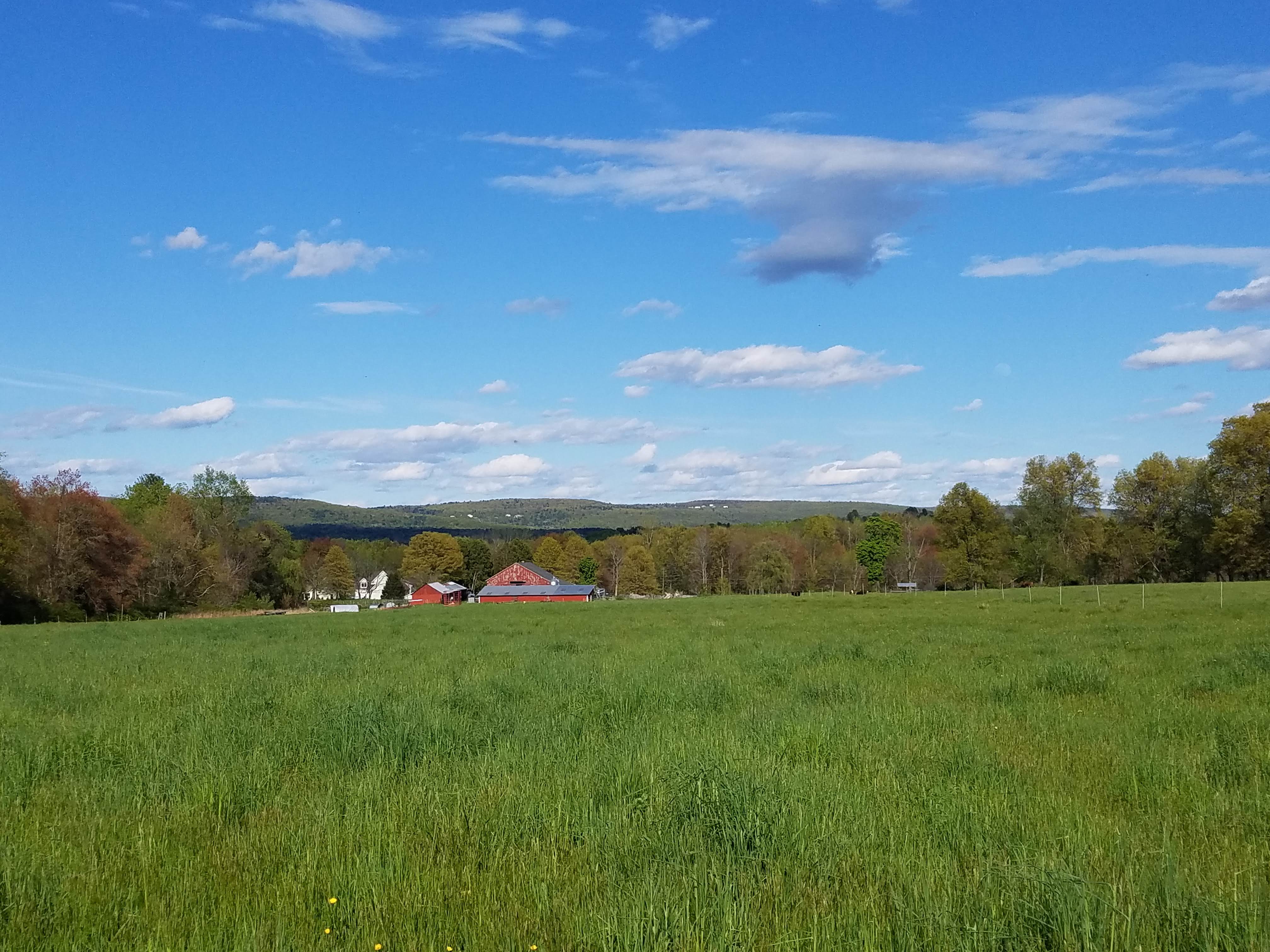A guest post by Div III student Joshua Minot, who is studying Acroecology with a focus on pasture-based animal agriculture.
 January 15th marked the start of the 20th annual Vermont Grazing and Livestock Conference hosted in Fairlee, Vermont—an event that brings together a wide variety of stakeholders from across New England. The conference was hosted by the University of Vermont Extension and offered an opportunity to engage with the latest information in the fields of animal husbandry and pasture management. As a Division III student studying Agroecology with a focus on pasture-based animal agriculture I jumped at the chance to participate in such an event.
January 15th marked the start of the 20th annual Vermont Grazing and Livestock Conference hosted in Fairlee, Vermont—an event that brings together a wide variety of stakeholders from across New England. The conference was hosted by the University of Vermont Extension and offered an opportunity to engage with the latest information in the fields of animal husbandry and pasture management. As a Division III student studying Agroecology with a focus on pasture-based animal agriculture I jumped at the chance to participate in such an event.
The first day was focused primarily on workshops related to “advanced grazing topics” and organic dairy production. In the crowd I found myself primarily among farmers, along with a couple representatives from major dairy purchasers in the region—additionally, I spotted the occasional educator and graduate student scribbling down notes. This is part of what makes this event so worthwhile—having the perspective of all these stakeholders led to many productive sessions.
I found the grazing workshop, facilitated by Jim Gerrish of American Grazing Land Services, LLC to be highly informative. Jim consults with producers across the U.S. and Canada. Additionally, he oversees a Management-intensive Grazing (MiG) operation in Idaho consisting of roughly 500-pairs (cows and calves) on a couple hundred acres of irrigated pasture. While Jim largely tailored his presentation to the New England region, his general discussion of pasture management in the Western U.S. was highly informative: with a majority of U.S. livestock farming taking place in production systems that are somewhat divergent from those found in the Northeast, it was great to gain some insights into this variety of production (a topic I have been slightly insulated from while studying in Massachusetts).
The grazing workshop offered both review on fundamental management techniques and also introduced some new concepts, and the contextualization of new information alongside ‘common’ knowledge was quite helpful.
Much of the workshop was centered around the concept of optimizing productivity through management decisions as opposed to relying on inputs—something that could be considered a central tenet of agro-ecologically focused production systems. While this approach offers benefits for the environment, there is also an advantage for the bottom line of a farm when appropriate levels of labor can be substituted for costly inputs. Much of what Jim advocated for was related to avoiding what is known as “set-stocking”, which is the grazing of animals on a relatively large area of land for extended periods of time. This management approach presents multiple issues according to Jim, including increased soil compaction (and subsequent issues such as runoff) along with the hastened depletion of preferable forage species, among other concerns. These issues compound and lead to problems with forage intake by animals, which is oftentimes considerably reduced as animals spend more time in a given pasture—an issue of increased concern with dairy cows and when finishing beef cattle (both instances where nutrient requirements are higher). In light of this issue, Jim strongly suggests moving to a daily rotation schedule in accordance with a MiG strategy optimized for the site. Although this approach may sound too labor intensive, the presenter mentions how he is able to move roughly 500-pairs daily in under half an hour.
It can be helpful to think about this topic in terms of Temporal Utilization Rate and Seasonal Utilization Rate (SUR)—both of which are a measure of the amount of forage consumed either during a given period or for the entire grazing season, respectively. These figures are given in percentage of forage consumed by animals. It may seem intuitive to increase a given grazing session’s utilization rate in order to increase the SUR of a system. However, leaving ~50% of the forage un-grazed has oftentimes demonstrated to increase a given grazing system’s total forage production potential, and thusly the ability to optimize the SUR.
Other topics discussed during the grazing workshop include: forage stockpiling, low-cost reseeding methods, optimization of forage canopies for solar energy collection, digestibility of forage based on pasture maturity, parasite management through rotational grazing, and visualizing data for management decisions (see figure below), among other topics.
The presentation was well supported with scholarly literature, and Jim did a nice job of summarizing various studies—some of which he had involvement with in collaboration with various extension services. This aspect of the presentation was both helpful and refreshing for a student such as myself: there is an incredible amount of research being generated these days, but ultimately one must find manners in which to disseminate this information to a wide variety of stakeholders in order for its true impact to be realized.
Going forward, events such as this hold an incredible amount of value in terms of their ability to bring together a wide variety of industry participants. As the livestock grazing community addresses immediate concerns such as growth in the organic sector, a shifting landscape of purchasers, and broad topic of communicating modern knowledge and techniques, being able to get everyone in a room together is crucial. Furthermore, as the industry faces even more monumental challenges—such as grappling with animal agriculture’s impact on climate—this conference provided an excellent model of how a community can bring the right collection of people together.
A special thanks to Jennifer Colby, Pasture Coordinator at UVM’s Center for Sustainable Agriculture, for putting together a great conference and for your assistance during the event.

